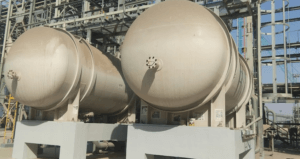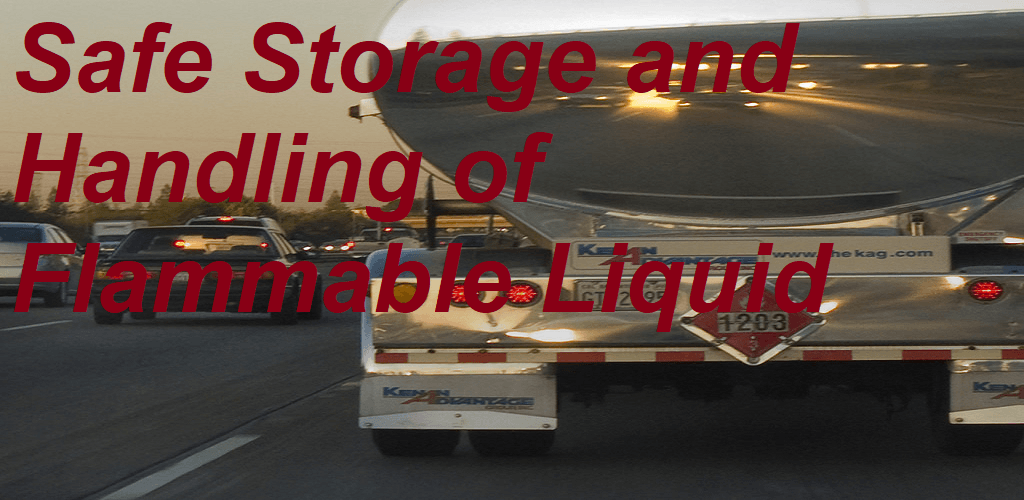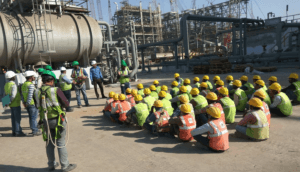Contents
Safe Storage and Handling of Flammable Liquid
Storage tanks of dangerous chemicals must be constructed and controlled properly. Safe inventory must be maintained. Content should be minimum possible. Necessary safety fittings on the tanks should be provided. LPG tanks and tanks of other flammable or toxic chemicals must have proper safety devices. Toxic gases should be kept in liquefied state if possible. Cooling media arid device, Safety valves, pressure gauges, temperature gauge, scrubber, level or content indicator, flare, water curtain, toxic exposure sensors and alarms, emergency bypass, safe discharge and collection, etc. should be provided as per requirement. Name and quantity must be clearly mentioned to assess the hazard potential. Barrels, Carboys, glass vessels must be kept, handled and used in safe manners. Use emergency kits, tools etc. where necessary. All the rents of storage ranks of low boiling chemicals should be connected to an appropriate condenser or scrubber. Alternate power (e. g. DC set) must be kept ready to run the cooling system scrubber etc., in case the main power fails.
Safety measures of some Specific chemicals are stated below:
General guidelines for loading/unloading liquids are as under:
- Take care of adverse weather conditions.
- Safe access to the top of the trailer tank car.
- Suitable fire extinguishers.
- Where air pressure is needed of other gases such as nitrogen, adequate hose lines should be provided with reducing valves. Pressure should be as minimum as possible. Soundness of the pipe line and joints should be checked. Breakable pipes should not be used for toxic chemical.
- Steam lines, if heating is necessary.
- Personnel discharging duty should be in the vicinity.
- Adequate personal protective equipment should be provided.
- Emergency shower and eye washer should be provided.
- Ensure that sufficient space is available in the receiving tank.
- Training of personnel necessary.
- Avoid mixing of chemicals. Take full precautions.
- Routine thorough check-up procedures.
- Proper identification on discharge lines.
- Earthing for transferring flammable liquids Muffler on exhaust pipe.
- Truck/ tanker should be fixed by brakes as or wheel-blocks and engine stopped while loading or unloading.

Flammable liquids are easily ignited and difficult to extinguish. Their vapours form explosive mixtures with air. Flammable liquids in unopened containers offer only moderate fire risk. They however, become severe fire hazard when containers are open or leaky Before handling, containers should be carefully inspected and damaged or leaky containers if any, be segregated. Containers should not be dropped roiled or so handled as to risk damage to them.
Good housekeeping standards are essential in storage areas. Such areas should be isolated by distance or constructions so that they do not expose important buildings to fire and in turn are protected from fire originating elsewhere. The extent of isolation depends upon the factors such as the maximum quantity of flammable liquid may be stored, the severity of the fire hazard presented by the flammable liquid etc. Detached locations should be preferred. Best locations are in the open under non-combustible weather canopies with minimum wall enclosure or in one story buildings without basements. Where storage in detached locations is not possible and the use of main building is unavoidable, with liquids offering only fire hazard, a room cut off from the rest of the space by fire resistant walls may be used. Where both fire and explosion hazard may exist in a main building, storage room should be located at an outside wall, cut off from other spaces horizontally and vertically with fire and pressure resisting construction. Floors should be liquid tight with slight down gradient to permit drainage. Rooms to be well ventilated to Safe guard against fire and explosion hazards as also against health hazards. Provision should be made for automatic sprinkler protection and all potential sources of ignition should be eliminated Cutting and welding Operation and smoking should be prohibited in storage area. The limitation regarding the maximum number of drums that may be stored in a particular location, the height of piles etc. would along other thing depends upon the severity of fire hazard associated with a particular flammable liquid.







